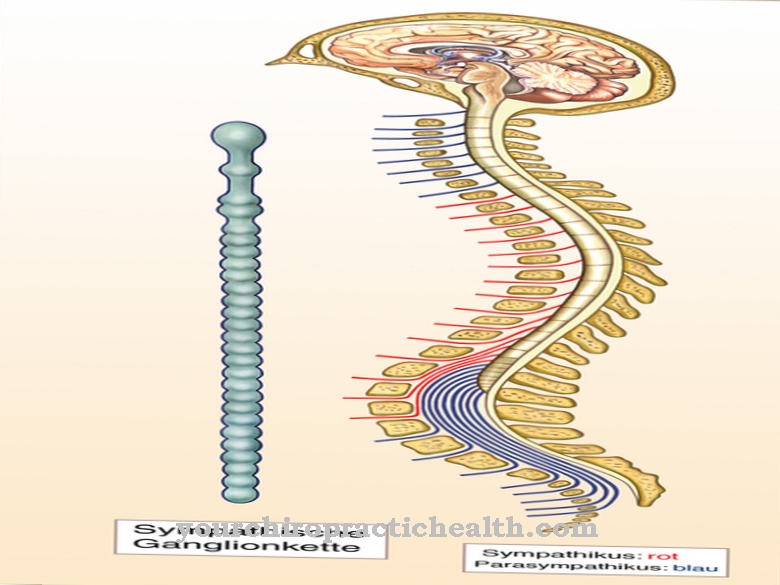The Psychoanalysis is a psychotherapy and at the same time a psychological theory. It was founded by Sigmund Freud and is the pioneer of depth psychology.
What is psychoanalysis?

Psychoanalysis can be divided into three areas. From a scientific perspective, psychoanalysis deals with unconscious psychological processes. Numerous different schools of psychoanalysis have scientifically developed Freud's theories and supplemented them with various concepts. Well-known successors of Freud are, for example, Melanie Klein, a pioneer in the field of child psychoanalysis and object relationship theory, or Heinz Kohut, the founder of the self-psychological direction of psychoanalysis.
Psychoanalysis can also be viewed methodically. She has developed her own methods for studying the human psyche. However, psychoanalysis has only achieved real awareness among the general public as a therapeutic method. In contrast to behavioral therapy, psychoanalysis claims to be able to identify and heal the cause of the psychological suffering.
Treatments & therapies
The basis of psychoanalysis as a therapeutic procedure is that the current psychological development of the human being is based on experiences from the past. This means that all wishes, desires, needs and feelings that a person has today are linked to events from their previous life. However, these causal relationships tend to influence behavior on an unconscious level and are rarely perceived by humans themselves.
According to psychoanalysis, every person has an unconscious, which has a great influence on the actions and thoughts of the individual. The unconscious is particularly involved in mental problems and mental illnesses. Freud's claim to psychotherapy was to bring these unconscious parts into consciousness, which influence people daily in their actions and thoughts. Psychoanalysis is thus a revealing therapy. The idea behind the awareness is that the patient can experience insight and understanding by looking at the unconscious connections of his illness.
The aim of psychoanalysis is to reshape and restructure the personality of the patient in such a way that characteristics that contribute to the maintenance of the disease lose their influence. There are various treatment methods to choose from to achieve this goal.
Classic psychoanalysis is a long-term process with three to five one-hour sessions per week. The patient lies on a couch and says everything that comes to mind. One speaks here of "free association". The analyst listens and offers the patient interpretations of these associations. Classical psychoanalysis includes up to 300 sessions and can take several years. Today this procedure is rarely used due to its high costs, but it was recommended by Freud in particular for the treatment of profound and long-standing mental disorders.
Medium-term psychoanalytical therapy methods such as dynamic psychotherapy, psychotherapy based on depth psychology or long-term therapy are less time-consuming. These procedures tend to be conflict-centered, i.e. there is no free association, but rather the therapist looks at the patient and focuses the conflict in the here and now with a view to the underlying conflicts of origin.
The positive effect of depth psychological procedures has been scientifically proven, especially for depression, panic disorders, borderline disorders and post-traumatic stress disorders. Analytical short-term therapies are suitable for short-term crisis intervention and emergency treatment. These do not exceed 25 sessions. The patient and the analyst concentrate on identifying and resolving a core conflict. A well-known short psychoanalytic procedure is focal therapy according to Michael Balint.
You can find your medication here
➔ Medicines to calm down and strengthen nervesDiagnosis & examination methods
Before any psychoanalysis, there is a diagnosis in the form of an initial interview. The main aim is to determine whether the patient with his problem is even suitable for psychoanalysis. The focus is on the transference and countertransference processes typical of psychoanalysis. The therapist himself is rather the participating observer than the leader of the conversation. It should record the living conditions of the patient and take his life development into account. Various procedures are used as an initial anamnesis.
In addition to the above-mentioned aim, the interactive interview according to Balint also aims to highlight the temporal relationships between the symptoms and the life-history events. The first psychoanalytic interview according to Argelander focuses more on the recording of unconscious messages and utterances by the patient. Conclusions about earlier experiences should then be drawn from this. The life story and biographical data play a negligible role here. The depth psychological biographical anamnesis according to Dührsen and Rudolf aims to capture the psychosocial and developmental factors from the current and past life of the patient as completely as possible. The patient's medical history and life story are also taken into account, as is the current social life situation.
With the help of the structural interview according to Kernberg, a distinction should be made between the three main types of personality organization. For this, the neurotic functional level, the borderline functional level and the psychotic functional level are determined.The patient's experience of illness and the expectations of the treatment can be recorded with the diagnostic interview for Operationalized Psychodynamic Diagnostics. The framework conditions under which the interviews are conducted are usually very similar.
Each of these interviews lasts about an hour. Basic goals such as initiating a therapeutic relationship and assessing the causal conflicts are also the same. However, the focus of the interviews is very different. As an alternative to the interviews, the method of biographical anamnesis can also be used for diagnosis. The psychological, medical and social developments recorded there provide the therapist with a comprehensive overview of the patient's entire personality development.





.jpg)




















.jpg)
